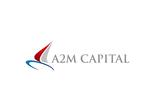Disclosure: Long DFS, KKR, RGLD
On November 3, 2010, the U.S. Federal Reserve announced what is called QE2, the program to buy long-term Treasuries to jump start the US economy. Stocks rallied over two percent on that day, but declined almost twice this amount in the following weeks. Equities had been rallying for months and anticipated/priced in the event.
Fast forward: on September 13 2012 QE3 was launched and stock markets cheered again. So far, the same pattern has been playing out just like 2010: since the announcement, the Dow Jones Industrial Average (INDU) has lost almost 200 points. Buy the rumor, sell the fact all over again.
At key inflection points, unpredictable markets become predictable. A trader of mostly random markets has to understand when price action loses some of its randomness and trade aggressively during these periods.
Since I saw the pattern, which I discussed above, building up in the last months, I kept taking profits during the rally and selling into strength. Certain offensive sectors have even tipped over and offered interesting opportunities on the short side. Therefore, the Covestor Technical Swing Model Portfolio outperformed significantly in the month of September with a gain of 5.3%.*
What could come next for the markets? Let’s take a look back to 2010 again. After a three week consolidation, equities began to rally on December 1 because investors started to price in progress in Europe and positive economic numbers hinted a stabilizing US economy.
I believe a similar driver will be needed to push US stocks higher until the end of the year. QE3 is behind us. Should the economy start to surprise to the upside again, markets could rally. I do not expect positive catalysts from Europe: European Central Bank intervention has long been priced in and the old continent has a long way to go to get back to economic growth.
Germany is probably just at the beginning of an economic downturn. China is the wildcard and it is not really clear if the country is experiencing a soft or hard landing. It is difficult to trust official numbers when they contradict observations of Western companies with Chinese operations.
One argument I hear often, actually too often, is that stocks should continue to rally because hedge funds have been underperforming in 2012 so far and have to play catch up. What I don’t like with this argument is that everybody seems to be in agreement with that. Whenever there is too much consensus, the argument usually fails as a driver for higher prices.
A potential catalyst is earnings season. Expectations are very low. If stocks can beat these low bars, we could indeed see a rally in the coming weeks. As usual, it will be crucial to monitor how stocks react on earnings news to get a picture of market’s strength.
Going into October, I maintain a portfolio of long and short positions. On the long side, I’m mostly trading orderly pullbacks of leading momentum stocks, such as Discover Financial Services (DFS), KKR & Co. (KKR) and Royal Gold (RGLD).
The holding in Royal Gold is playing on an interesting theme: the recent outperformance of Gold-related assets. I discussed the stock in the September monthly review. When a strong underlying theme is at work, I usually trade in and out of the stock a couple of times to catch some of the short-term price swings. This strategy has served me well in the last years.
Short trades are mostly trend-termination setups in weaker names. Examples of this category in my portfolio are Capital One Finance (COF), Chesapeake Energy (CHK) and Zillow (Z).
Overall I’m not as bullish as I was in August/September. But I wouldn’t color me bearish, either. We might just see some volatile sideways movement until the end of the year.
Disclosure: Performance discussed is net of advisory fees. The index comparisons herein are provided for informational purposes only and should not be used as the basis for making an investment decision. There are significant differences between client accounts and the indices referenced including, but not limited to, risk profile, liquidity, volatility and asset composition. The S&P 500 is an index of 500 stocks chosen for market size, liquidity and industry, among other factors.
The investments discussed are held in client accounts as of September 24, 2012. These investments may or may not be currently held in client accounts.The reader should not assume that any investments identified were or will be profitable or that any investment recommendations or that investment decisions we make in the future will be profitable.
Certain of the information contained in this presentation is based upon forward-looking statements, information and opinions, including descriptions of anticipated market changes and expectations of future activity. Covestor believes that such statements, information, and opinions are based upon reasonable estimates and assumptions. However, forward-looking statements, information and opinions are inherently uncertain and actual events or results may differ materially from those reflected in the forward-looking statements. Therefore, undue reliance should not be placed on such forward-looking statements, information and opinions.





